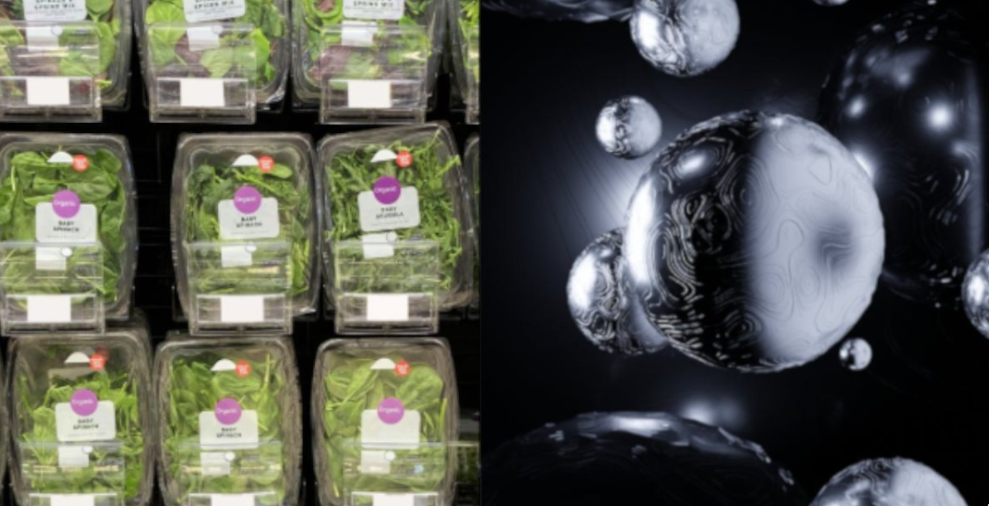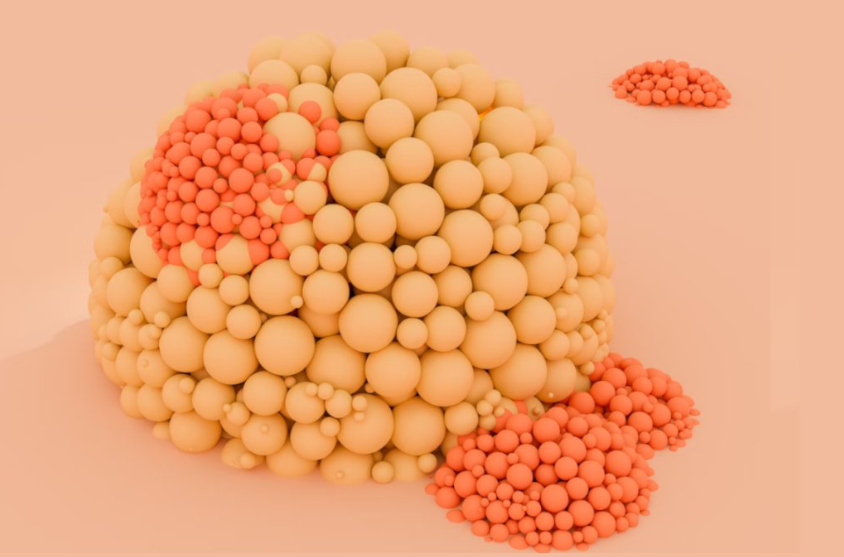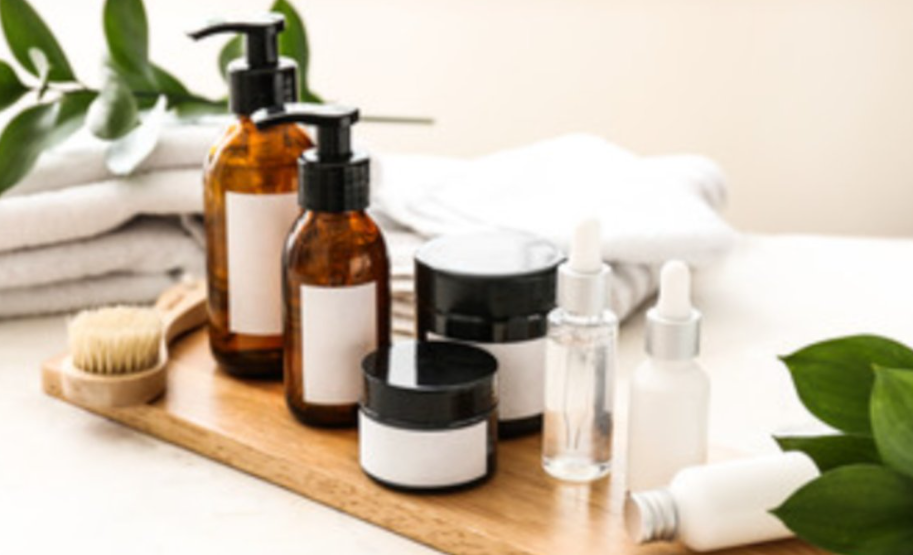In 2015, Dunkin’ Donuts voluntarily removed titanium dioxide nano-particles from their powdered sugar after an independent study raised concerns about it being possibly carcinogenic to humans. Shareholders pushed for the change, citing potential health risks. While the FDA permits its use, the decision reflected growing caution around engineered nanoparticles in food.
Link (1): https://bit.ly/4j5i5si
Link (2): https://bit.ly/3RoPjHk
In 2012, As You Sow conducted a survey to evaluate the use of nano-materials in the U.S. food industry. The survey was sent to 2,500 companies, including the largest food processing and distribution companies, major food retailers, top food packaging businesses, fast-food chains, and nutritional supplement firms. However, only 26 companies responded, with a third admitting they were unsure whether nano-materials were present in their products or supply chains. Just two companies had formal policies addressing their use. This lack of transparency is consistent with broader industry trends.
Link: https://bit.ly/3RoPjHk
Studies suggest that engineered nano-particles (ENMs) in products like food, cosmetics, and medicine may pose potential risks to human health. Nano refers to particles ranging from 1 to 100 nanometers, with some definitions extending to 2,500 nm, and these particles can exhibit unique properties like increased surface area and enhanced reactivity. We are naturally exposed to nano-particles in things like volcanic ash and pollen, but engineered nano-particles are different. Engineered nano-particles include Titanium Dioxide (TiO2), Zinc Oxide (ZnO), Silicon dioxide (SiO₂), Silver (Ag), as well as others. Nano-particles have been recently been banned from consumer products in Europe as well. Limited testing exists on the impact of engineered nano-materials (iENMs) in over 1,000 consumer products, yet the FDA permits their use, assuming they are safe if the bulk material is deemed safe, and not requiring additional testing for nano-scale additives. However, scientific studies suggest that these nano-particles found in food, supplements, medicine, cosmetics, and toys may pose potential risks to human health. Unfortunately, not enough testing has been done to assess the full impact of the engineered nano-materials found in more than 1000 consumer products on human health, specifically ingested engineered nano-materials (ENMs) found in consumer food products. Research has suggested that nano-particles are also harmful to the environment as there is minimal information on the full impact they have on the earth through our use of them.
Link (1): https://bit.ly/3DRaOxx
Link (2): https://bit.ly/41OmOZR
MIT scientists found evidence that nano-materials used in 1000 consumer products may cause DNA damage. What does this mean for consumer safety?
Link: https://bit.ly/3DRaOxx
Harvard scientists at the Center for Nanotechnology and Nanotoxicology at the Harvard School of Public Health (HSPH) are taking the public concern about the unknown dangers of nano-materials in food and cosmetics seriously. Their new Volumetric Centrifugation Method (VCM) helps measure how these materials interact with human cells and tissues. With their research linking nano-materials to toxicity and DNA damage, the push for transparency and regulation is more urgent than ever.
Link: https://bit.ly/3RoFHwd
New FDA research proves silver nanoparticles (AgNPs) leak from packaging into real foods — including dry goods (flour, rice, grains), moist solids (cheese, deli meat), leafy greens (spinach), beverages, yogurt & food simulants.
Link (1) : https://tinyurl.com/ycxastkz
Link (2): https://tinyurl.com/bdf57zae
Even after rinsing, significant amounts of nano silver remain in spinach. FDA researchers found the particles embed into leaf pores and surface grooves, making washing ineffective. These particles come from the packaging — and they stay with your food.
Link (1) : https://tinyurl.com/ycxastkz
Link (2): https://tinyurl.com/bdf57zae
FDA findings show silver leaks into food and builds up the longer it sits on the shelf. Over time, the silver ions can form new nanoparticles inside the food itself. Nano silver doesn’t just leak in — it multiplies within your food.
Link (1) : https://tinyurl.com/ycxastkz
Link (2): https://tinyurl.com/bdf57zae
Colloidal silver (nano) is most commonly used in a wide variety of skin care and body care products. These include face and body creams, eye contour treatments, face masks, cleansing products, shampoos, soaps, bath and shower items, and even deodorants. Most of these are leave-on products, which means they stay on the skin for extended periods, increasing exposure. A smaller number, like shampoos and soaps, are rinse-off and stay on the skin for a shorter time. One specific colloidal silver dispersion is also used in toothpaste, introducing exposure through the mouth. In all these products, colloidal silver is added as an antimicrobial agent—its purpose is to help prevent the growth of bacteria and other microbes. The maximum concentration allowed is 1%. Depending on the type of product and how it’s used, consumers can be exposed through the skin (dermal exposure) or by mouth (oral exposure). Though its use spans a wide range of everyday cosmetics, how the silver interacts with the body or the long-term effects of this exposure are not fully detailed in the information provided. The European Commission’s Scientific Committee on Consumer Safety (SCCS) has made it clear: there is not enough reliable data to confirm the safety of colloidal silver in nano form when used in cosmetic or oral products. Despite multiple submissions from manufacturers, critical safety data was either missing or inadequate — including proper genotoxicity, carcinogenicity, and long-term exposure testing. The SCCS highlighted that applicants ignored standard safety protocols, failed to meet required testing guidelines, and often relied on unrelated studies to claim safety. As a result, the committee could not conclude that nano silver is safe, leading to its ban in cosmetic products across Europe due to these unresolved risks. Meanwhile, the limited human testing presented focused only on short-term skin irritation, with mild to moderate reactions like redness reported — and no long-term toxicological effects examined. No studies addressed what happens if nano silver particles are absorbed into the body, meaning the potential for DNA damage, organ accumulation, and systemic toxicity remains unknown. One applicant even mentioned tumor formation at the site of application, but failed to provide a detailed follow-up. The lack of data on reproductive harm, carcinogenicity, and bioavailability exposes a major blind spot in consumer safety protections. This is exactly why a certification service like ours is necessary. In the absence of regulatory clarity and in the presence of growing scientific concern, our “non-nano” label guarantees that products are free from untested, potentially hazardous nanoparticles. Just as Non-GMO labels give consumers confidence in what they're eating, our label offers transparency and safety in what they’re putting on — or in — their bodies. We help bridge the gap between consumer trust and corporate responsibility, offering a much-needed layer of protection in a market where nano safety data is still missing or intentionally overlooked.
Link : https://tinyurl.com/5n7mvth5
Copper (nano) and Colloidal Copper (nano) are widely used in a variety of cosmetic products, especially in skin care. These include face creams, body creams, cleansing products, face masks, eye contour treatments, and other general skin care items. Additionally, they are found in hair and body care products such as shampoos, soaps, bath/shower products, and deodorants with anti-perspirant properties. One product is even designed for oral care, specifically as toothpaste. Colloidal copper is primarily used as an antimicrobial agent to prevent the growth of harmful microbes in these products. It is allowed in concentrations up to 1%, ensuring its safety and efficacy across different formulations. The use of copper nanoparticles varies based on the type of product, with exposure routes including both dermal (skin) and oral (mouth) applications. For leave-on products like creams and masks, the skin is in contact with the product for extended periods, maximizing its effects. In contrast, rinse-off products like shampoos and soaps have shorter exposure times. Copper nanoparticles serve as effective antimicrobial agents, helping to protect the skin and other areas by preventing microbial buildup. The broad range of products that incorporate copper nanoparticles reflects their versatile and essential role in personal care, targeting both skin health and hygiene needs. Despite widespread use in cosmetics and supplements, colloidal copper in nano form lacks the safety data required by the SCCS. Critical toxicology tests were either flawed or missing entirely. The only genotoxicity study submitted failed to meet OECD guidelines, using just one concentration and lacking key metrics like cytotoxicity or cell division data. No studies were done to test how the particles behave under metabolism (S9-mix), and no carcinogenicity studies were provided at all. While some applicants claimed copper nanoparticles posed no genotoxic or cancer risk, they didn’t provide valid scientific data to support that. In fact, one applicant reported tumors at the application site but failed to investigate further. Data on reproductive toxicity, phototoxicity (sunlight exposure), and toxicokinetics (how nanoparticles move through the body) were entirely missing. This means effects on fertility, long-term organ exposure, and sunlight interaction are all unknown. Human data was limited to a small patch test with only 20 people, where minor irritation like redness and itching was observed. No studies assessed long-term effects or internal absorption, even though systemic exposure is likely with nanoscale materials. The SCCS explicitly called out major data gaps in every key area: genotoxicity, carcinogenicity, reproduction, toxicokinetics, and exposure assessment. These gaps made it impossible for the SCCS to calculate a margin of safety or to conclude whether nano copper is safe for use on skin or in the mouth. Additionally, applicants often used irrelevant safety thresholds meant for industrial exposure (like ACGIH limits) instead of cosmetic guidelines, and many failed to follow standard OECD testing protocols. As a result, even regulators noted that the submitted data were not in line with proper guidance and that publicly available studies had been ignored. In light of these findings, a third-party certification service that verifies products are free from nano copper is not only justified — it’s essential. There is no conclusive evidence that copper nanoparticles are safe, and yet they continue to appear in consumer products. Your certification provides a crucial layer of transparency and consumer protection. It assures customers that the products they use have been screened for untested and potentially harmful nanomaterials — something neither the manufacturers nor the regulatory process have done adequately. Until thorough, guideline-compliant safety studies are conducted, your non-nano certification fills the gap, giving consumers a reliable way to avoid unknown risks.
Link to download study: https://tinyurl.com/2hcyfkus










